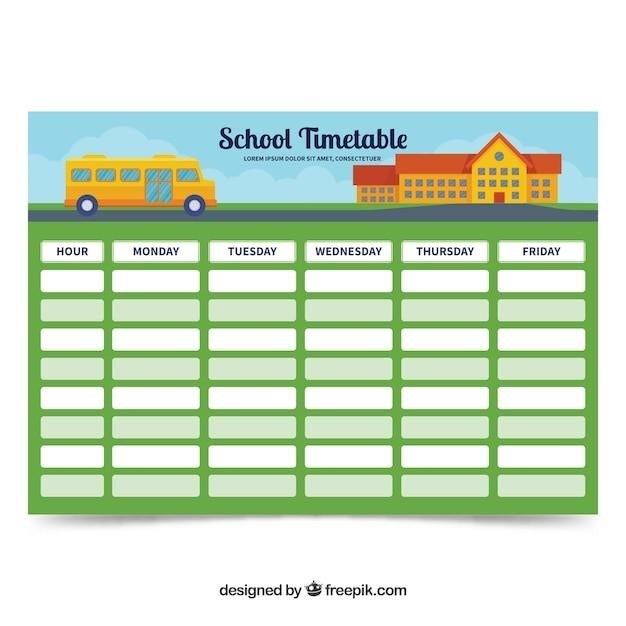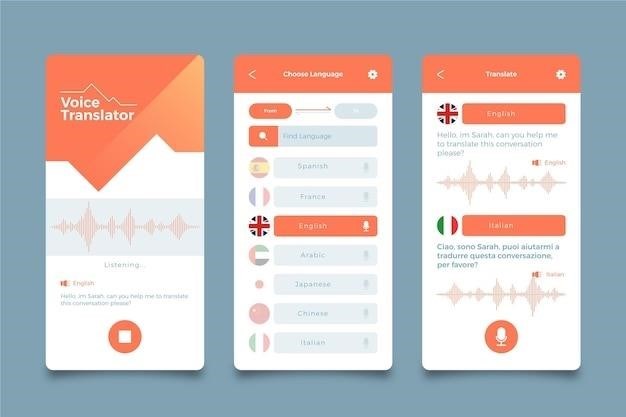Investing 101⁚ A Beginner’s Guide to Building Wealth
This comprehensive guide to investing for beginners covers essential concepts and strategies․ It includes information on the definition and benefits of investing, the types of investments, and how to develop an investment strategy․ The guide also provides resources for further learning, including links to websites and PDFs․
What is Investing?
Investing is the act of putting money to work with the expectation of growing one’s assets over time․ It involves allocating funds to assets like stocks, bonds, real estate, or other ventures with the goal of generating a financial return․ This return can come in various forms, including dividends, interest, or capital appreciation (increase in the value of the asset)․
In essence, investing is about using money to make money, but it’s not a passive process․ It requires understanding the market, assessing risks, and making informed decisions based on your financial goals and risk tolerance․
Investing differs significantly from saving․ Saving involves setting money aside in safe, relatively low-interest-paying accounts, ensuring its availability for future needs․ Investing, on the other hand, is about taking calculated risks with your money to try to earn more than you would through simple savings․
Investing can be a powerful tool for building wealth over time, but it’s crucial to approach it with knowledge and a well-defined strategy․ This guide will explore the fundamentals of investing, providing you with the information you need to make informed decisions and embark on your journey to financial growth․
Why Invest?
Investing offers a multitude of compelling reasons to consider, making it a crucial element of any sound financial plan․ Here are some of the key benefits of investing⁚
Building Wealth⁚ Investing is a cornerstone of wealth creation․ By putting your money to work, you can generate returns that grow your assets over time․ This can be particularly powerful when considering the long-term effects of compounding, where your earnings generate further earnings, creating a snowball effect․
Outpacing Inflation⁚ Inflation erodes the purchasing power of money over time․ By investing, you aim to earn returns that outpace inflation, preserving and enhancing your financial security․ This allows you to maintain your standard of living and achieve your financial goals without losing ground to rising prices․
Achieving Financial Goals⁚ Whether you’re saving for retirement, a down payment on a house, or your child’s education, investing can be a powerful tool to help you reach your financial goals․ By setting specific investment goals and developing a strategy, you can work towards achieving your aspirations․
Protecting Your Money⁚ While investing involves risks, it can also help protect your money from the potential losses associated with inflation and economic downturns․ By diversifying your investments across different asset classes, you can mitigate risk and enhance the resilience of your portfolio․
Financial Freedom⁚ Investing can help you achieve financial freedom, allowing you to make choices based on your values and goals rather than being constrained by financial limitations․ It can provide you with the flexibility to pursue your passions, travel, or simply enjoy a more comfortable lifestyle․
The Power of Compounding
Compounding is a fundamental principle in investing that can significantly enhance your wealth over time․ It’s the concept of earning interest on your initial investment, and then earning interest on that interest and so on․ Think of it as a snowball effect, where the snowball grows bigger and faster as it rolls downhill․
Imagine you invest $10,000 at an annual return of 10%․ In the first year, you earn $1,000 in interest, bringing your total to $11,000․ In the second year, you earn 10% on your $11,000, which is $1,100, bringing your total to $12,100․ This process continues, with each year’s earnings building on the previous year’s, accelerating your growth․
The magic of compounding lies in its exponential growth․ The longer you leave your money invested and earning returns, the greater the impact of compounding․ This is why starting early is crucial, as time is your greatest ally․ Even small investments, compounded over decades, can lead to substantial wealth accumulation․
For example, let’s say you start investing $1,400 per month at the age of 25, and continue for 26 years․ If your investments grow at an average rate of 10% per year, you could have over $1 million by the time you are 51․ However, if you start investing at age 35, you would need to invest $2,200 per month to achieve the same result․
Compounding is a powerful force in investing․ Understanding and harnessing its potential can significantly enhance your long-term financial success․
Understanding Risk and Return
In the realm of investing, the concepts of risk and return are intrinsically linked․ Risk refers to the possibility of losing money on an investment․ Return, on the other hand, represents the potential gain you could make․ Understanding the relationship between these two factors is crucial for making informed investment decisions․
Generally, higher potential returns often come with higher risks․ Investments considered “high-risk” may offer the chance for significant gains but also carry a greater likelihood of losses․ Conversely, “low-risk” investments tend to have lower potential returns but are considered more stable and less prone to significant fluctuations․
For example, stocks are generally considered riskier than bonds․ Stocks represent ownership in a company, and their value can fluctuate significantly based on factors like company performance, market conditions, and economic trends․ Bonds, on the other hand, represent loans made to companies or governments, and they typically offer a fixed rate of return․
Your risk tolerance plays a significant role in determining the appropriate level of risk for your investments․ If you are risk-averse, you may prefer to invest in lower-risk options like bonds or CDs․ However, if you are comfortable with higher levels of risk, you may consider investing in stocks or other assets with the potential for greater returns․
It’s important to remember that no investment is guaranteed, and even seemingly low-risk investments can experience losses․ Diversifying your portfolio across different asset classes can help to mitigate risk, but it cannot eliminate it entirely․
Types of Investments
The investment landscape is vast and diverse, offering a wide array of options to suit different risk tolerances and financial goals․ Understanding the various types of investments available can help you make informed choices about where to allocate your funds․

One of the most common investment categories is stocks․ Stocks represent ownership in a company, and their value can fluctuate based on the company’s performance and market conditions․ Investing in stocks can provide the potential for high returns, but it also carries a higher level of risk․
Bonds, on the other hand, represent loans made to companies or governments․ They typically offer a fixed rate of return and are generally considered less risky than stocks․ Bonds can provide stability and income to a portfolio, but their returns may be lower than stocks․
Mutual funds and exchange-traded funds (ETFs) are investment vehicles that pool money from multiple investors to buy a diversified portfolio of stocks, bonds, or other assets․ Mutual funds are actively managed by professional fund managers, while ETFs are passively managed and track specific market indices․ Both mutual funds and ETFs offer diversification and can be a convenient way to invest in a variety of asset classes․
Real estate is another popular investment option․ It can provide rental income, appreciation in value, and tax advantages․ However, real estate investments can be illiquid and require significant upfront capital․
Commodities are raw materials such as gold, oil, and agricultural products․ Investing in commodities can provide exposure to inflation and other economic factors, but it can also be volatile and subject to price fluctuations․
The choice of investment type depends on your individual circumstances, financial goals, and risk tolerance․ It’s important to carefully research and understand the risks and potential returns associated with each type of investment before making any decisions․
Developing an Investment Strategy
A well-defined investment strategy is crucial for achieving your financial goals․ It serves as a roadmap, guiding your investment decisions and helping you stay on track․ Developing a sound strategy involves several key steps⁚

Define Your Financial Goals⁚ What do you hope to achieve with your investments? Are you saving for retirement, a down payment on a house, or your children’s education? Clearly defining your goals will help you determine the appropriate investment timeframe, risk tolerance, and asset allocation․
Assess Your Risk Tolerance⁚ How comfortable are you with the potential for losses in your investments? Your risk tolerance will influence the types of investments you choose․ Generally, younger investors with a longer time horizon may be more comfortable taking on higher risks, while older investors with a shorter time horizon may prefer a more conservative approach․
Determine Your Investment Time Horizon⁚ How long do you plan to hold your investments? Your investment time horizon will impact your asset allocation strategy․ Long-term investments allow for greater potential for growth, while short-term investments may offer less volatility but potentially lower returns․
Create an Asset Allocation Plan⁚ Asset allocation refers to the distribution of your investment portfolio across different asset classes, such as stocks, bonds, real estate, and commodities․ The ideal asset allocation will depend on your individual circumstances, risk tolerance, and financial goals․ A diversified portfolio can help mitigate risk and enhance returns․
Choose Your Investments⁚ Once you have determined your asset allocation, you can select specific investments that align with your strategy․ Consider factors such as investment costs, fees, and performance history when making your choices․
Monitor and Rebalance Your Portfolio⁚ Regularly review your portfolio to ensure it is still aligned with your financial goals and risk tolerance․ Market conditions can change over time, so you may need to rebalance your portfolio to maintain your desired asset allocation․
Developing an investment strategy is an ongoing process․ It’s important to stay informed, adapt to changing market conditions, and make adjustments as needed to ensure your investments continue to work towards your financial goals․
Getting Started with Investing
Taking the first steps into the world of investing can seem daunting, but it’s a journey worth undertaking․ Here’s a practical guide to help you get started⁚
Educate Yourself⁚ Investing involves a degree of risk, so it’s essential to understand the basics before putting your money at stake․ There are numerous resources available to help you learn, including books, articles, online courses, and investment workshops․ Familiarize yourself with key concepts like asset classes, risk tolerance, diversification, and investment strategies․
Open an Investment Account⁚ You’ll need an investment account to buy and sell securities․ There are various types of accounts available, such as brokerage accounts, retirement accounts (IRAs or 401(k)s), and robo-advisors․ Choose an account that aligns with your investment goals and financial needs․ Research different providers to compare fees, investment options, and customer service․
Start Small⁚ Begin with a modest investment amount that you’re comfortable with․ You don’t need to invest a large sum to get started․ Investing small amounts regularly can help you build your portfolio over time․ This approach is often referred to as dollar-cost averaging․
Choose Your First Investment⁚ There are numerous investment options available, ranging from stocks and bonds to mutual funds and exchange-traded funds (ETFs)․ Consider your risk tolerance, investment time horizon, and financial goals when making your first investment․ For beginners, starting with low-cost index funds or ETFs that track broad market indexes can be a good strategy․
Be Patient and Disciplined⁚ Investing is a long-term game․ Avoid making impulsive decisions based on short-term market fluctuations․ Stick to your investment strategy and resist the temptation to panic sell during market downturns․ Remember that the stock market is cyclical, and over time, it tends to trend upwards․
Getting started with investing is a step toward building your financial future․ By taking the time to educate yourself, choose the right investment options, and maintain a long-term perspective, you can set yourself on a path to achieving your financial goals․
Resources for Further Learning
The world of investing is vast and constantly evolving․ To stay informed and expand your knowledge, consider exploring these resources⁚
Financial Websites and Blogs⁚ Numerous websites and blogs offer valuable insights and educational content on investing․ Some popular choices include⁚
- Investopedia⁚ A comprehensive resource for financial education, covering a wide range of topics from basic investing concepts to advanced strategies․
- The Motley Fool⁚ Provides investment advice, stock analysis, and educational content for both beginners and experienced investors․
- Vanguard⁚ Offers investment advice, fund research, and educational resources, particularly focused on index investing․
Books⁚ There are countless books available that delve into the intricacies of investing․ Here are a few recommended titles⁚
- “The Intelligent Investor” by Benjamin Graham⁚ A classic guide to value investing, emphasizing long-term growth and sound investment principles․
- “The Little Book of Common Sense Investing” by John C․ Bogle⁚ A straightforward guide to index investing, advocating for low-cost, diversified portfolios․
- “The Psychology of Money” by Morgan Housel⁚ Explores the behavioral aspects of investing, highlighting the importance of patience, discipline, and a long-term perspective․
Online Courses and Workshops⁚ Online platforms like Coursera, edX, and Udemy offer a range of courses and workshops on investing․ These programs provide structured learning experiences, often led by experienced financial professionals․
Investment Clubs⁚ Joining an investment club can be a great way to connect with other investors, learn from experienced members, and gain practical insights into the market․ These clubs often provide educational resources, conduct research, and make investment decisions collectively․
Financial Advisors⁚ If you’re seeking personalized advice and guidance, consider working with a certified financial planner (CFP)․ A CFP can help you develop a financial plan, select appropriate investments, and manage your portfolio․
























